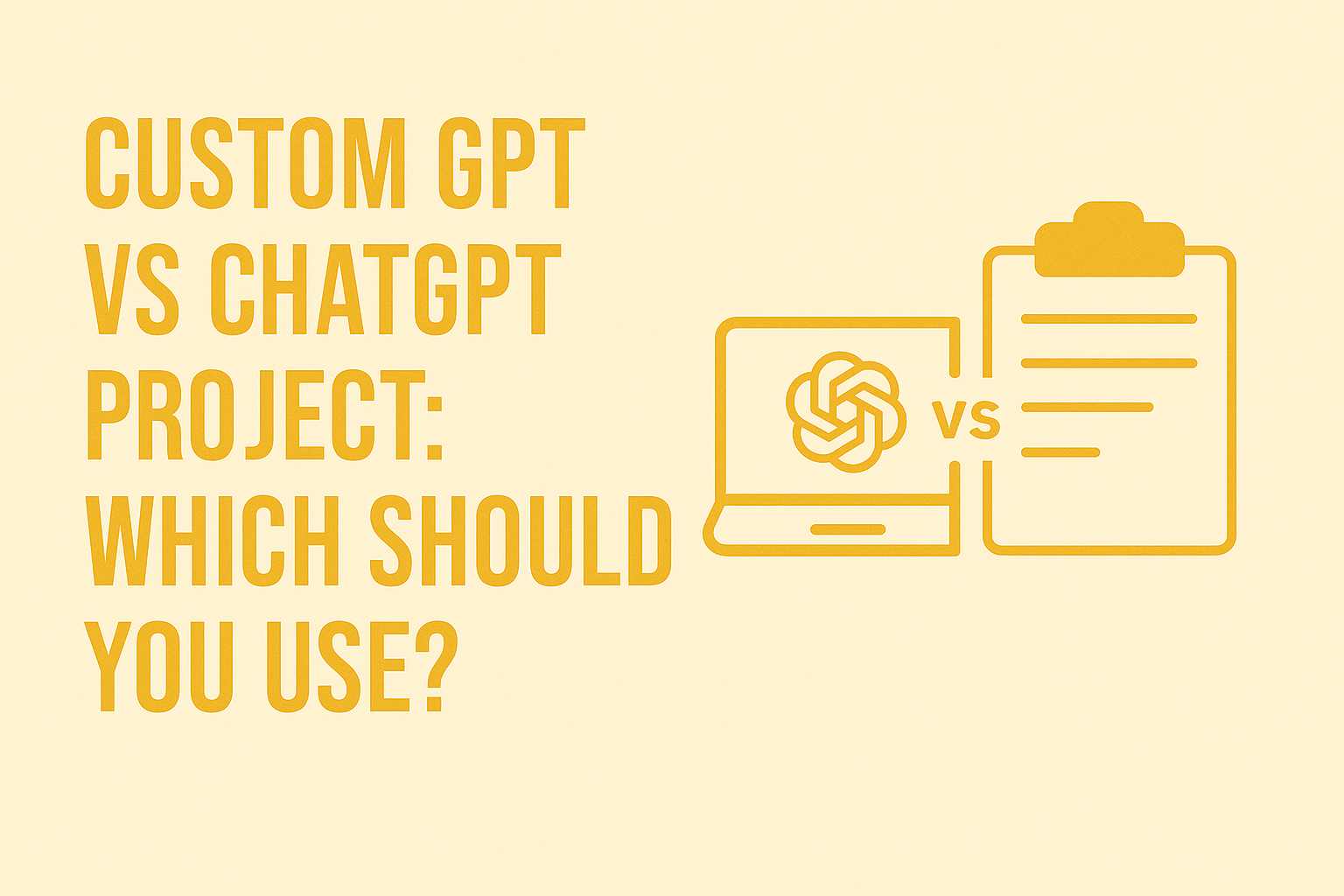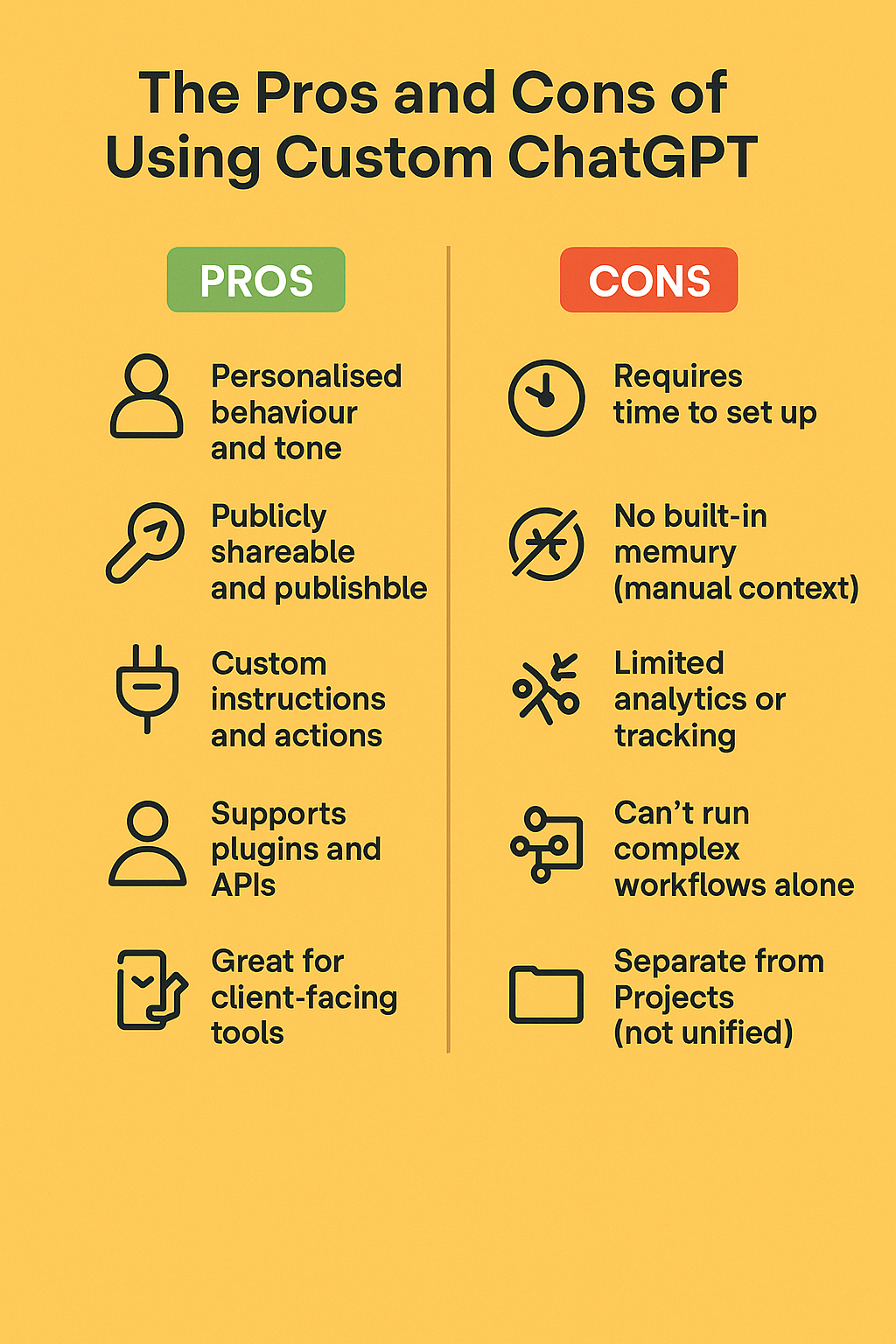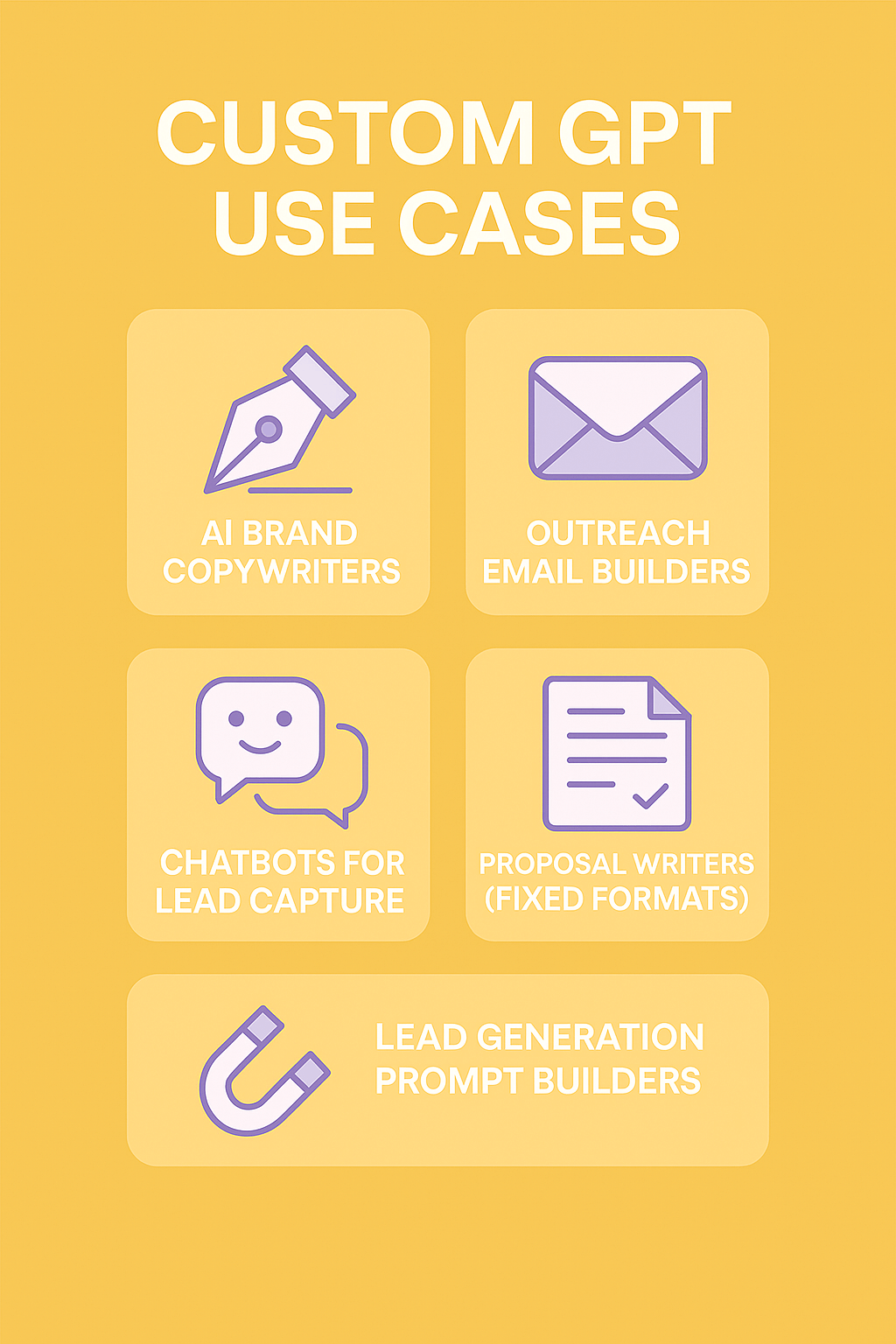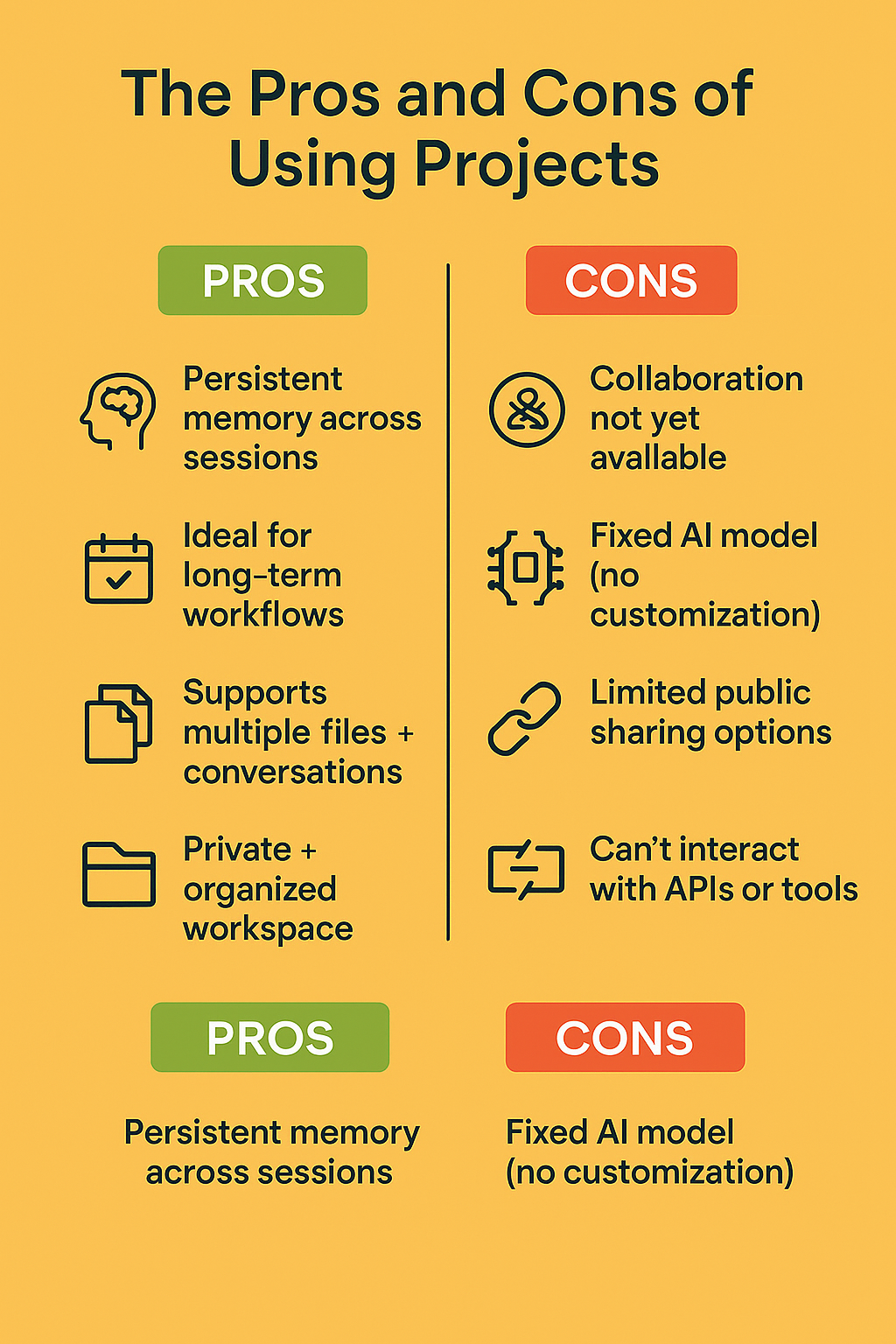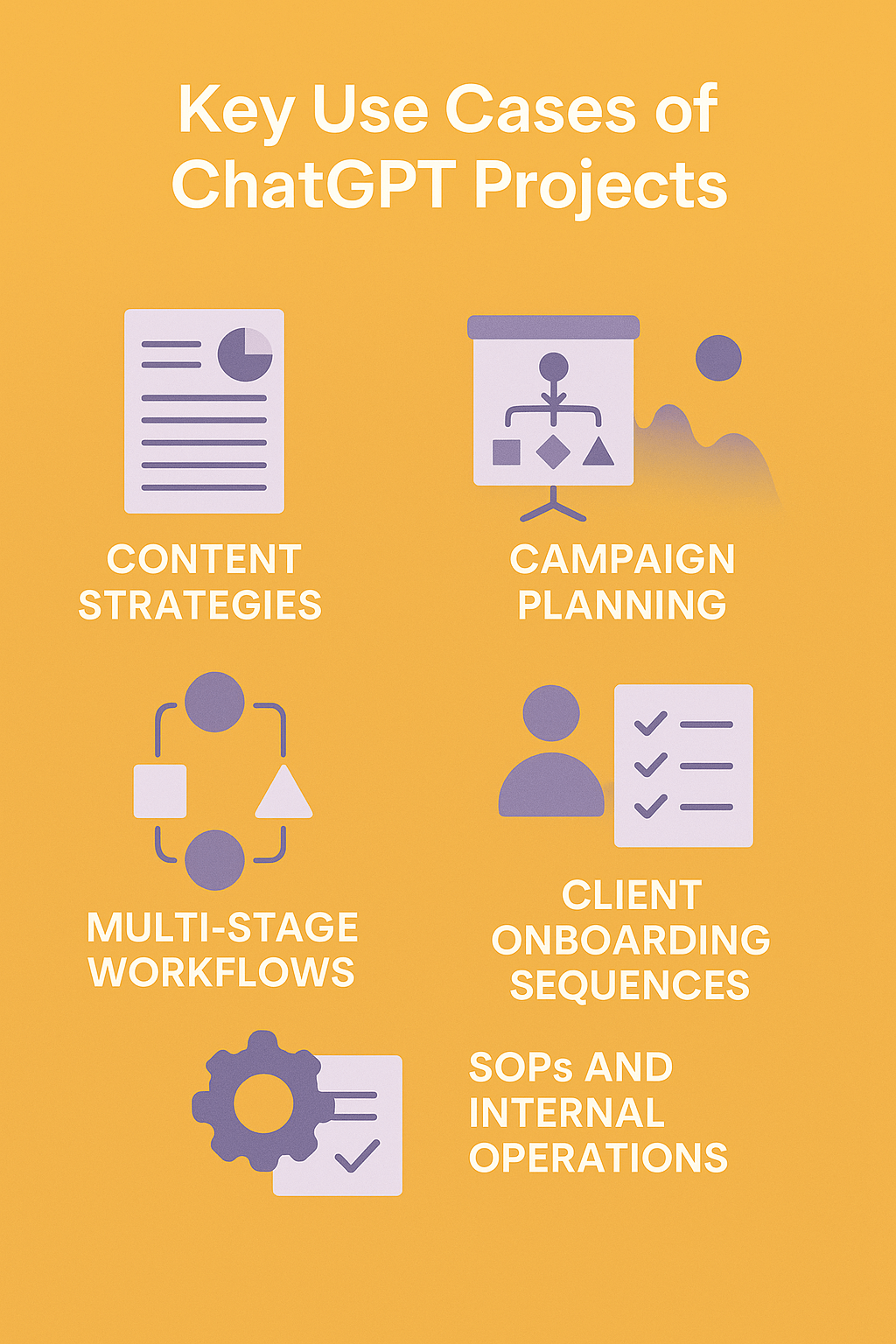When to Use Custom ChatGPT vs ChatGPT Projects
Are you trying to figure out whether to use a Custom GPT or a ChatGPT Project?
I know, it’s not always an obvious decision.
That’s why I’m breaking it down clearly.
These tools might live in the same app, but they’re built for different purposes.
One is your go-to for repeatable, shareable AI assistants.
The other acts like a long-term, memory-rich workspace for complex, evolving tasks.
In this guide, we’ll cover exactly when to use each one, how to combine them, and real examples to make your workflow smoother and smarter.
🎧 Prefer to Listen? If you'd rather consume this as an interactive walkthrough or audio version, listen below:
Key Takeaways
Custom GPTs are best for repeatable tasks and tools you want to share.
Projects are better for workflows with memory and ongoing collaboration.
Use Custom GPTs for templates, APIs, and brand voice control.
Use Projects for planning, content strategy, and document-heavy tasks.
Use Projects for strategy build-outs, document-heavy workflows, or team-based ideation that benefit from saved context across sessions.
Projects support memory, file uploads, and organisation across sessions.
Custom GPTs are sharable, template-based, and ideal for fixed outputs.
You can use both—depending on your goal.
What Is a Custom GPT?
A Custom GPT is your own tailored version of ChatGPT.
Essentially a specialised AI assistant that follows your specific rules, tone, goals, and workflows.
Instead of starting from scratch with each prompt, a Custom GPT comes pre-loaded with instructions, example outputs, and even uploaded files that guide how it behaves.
You can use it to mirror your brand’s voice, automate repetitive content tasks, or even embed it into client-facing tools. Think of it as programming an AI to act like a trained team member—without writing code.
It’s ideal for:
Task-specific workflows
Brand-consistent writing
Shareable tools for clients or teams
You define the instructions. Upload documents. Set example responses. The GPT follows them every time.
👉 Learn how to create a Custom GPT
Custom GPT Use Cases
AI brand copywriters
Outreach email builders
Chatbots for lead capture
Proposal writers using fixed formats
Lead generation tools or prompt builders
Important note: Custom GPTs allow tool calling (aka function calling), which lets you connect external services like CRMs, databases, or automation platforms such as Make or Zapier. This makes them powerful for dynamic content generation or data-driven outputs.
However, as of now, Custom GPTs default to using the GPT-4 Turbo model—which some sources consider less current than GPT-4o used in Projects. You can't change the model on a Custom GPT.
What Is a ChatGPT Project?
A Project in ChatGPT is like your digital workspace, designed to help you manage long-term or multi-phase work within a single, structured environment.
Think of it as your own mini dashboard where you can store relevant chats, upload project files, and create custom instructions that apply to every conversation within that project. It’s especially useful when you’re juggling multiple content pieces, managing a client pipeline, or building out strategic marketing assets over time.
What sets a Project apart is its use of memory!!!
ChatGPT remembers previous interactions, understands the context you’ve already provided, and can build on that with each new session. You can also upload files like briefs, past campaigns, or customer profiles, which the model can reference at any point.
Projects run on the more advanced GPT-4o model, which means better contextual understanding, improved reasoning, and higher-quality outputs—especially for structured tasks. And while you can’t share a Project or integrate APIs directly, it’s a powerful internal tool for creators, consultants, and marketers who need continuity and clarity across their AI-powered workflows.
It:
Groups chats, files, and instructions
Uses memory across sessions
Adapts over time to your tone and needs
👉 See how I used Projects to cut my content time by 50%
ChatGPT Use Cases
Content strategies
Campaign planning
Multi-stage workflows
Client onboarding sequences
SOPs and internal operations
Important note: Projects do not change the core behaviour of ChatGPT. They operate within the GPT-4o model and apply instructions as contextual guard rails, not core prompts. You’re not customising the agent—you’re setting a structured space with high-level instructions.
Also worth knowing:
You can’t share Projects like you can GPTs.
Chats within a Project can’t access each other’s history, even within the same folder.
You can’t move a Custom GPT chat into a Project workspace.
Projects allow multiple file uploads and persistent memory, but not direct API/tool integrations.
Which Should You Use?
Here’s a simplified decision guide for when to use each tool:
Choose a Custom GPT when:
You need repeatable, consistent outputs
You want to share tools with your team or clients
You want external API integration — Zapier, CRM, Make, etc.
Your workflow can be reduced to clear prompts and instructions
💡 Example: An agency builds a Custom GPT for writing meta descriptions based on uploaded product specs. It handles tone, structure, and SEO formatting, then auto-sends to Google Sheets.
Use a ChatGPT Project when:
Your work requires context retention
You’re handling multiple documents or conversations
You want to collaborate or keep work private
How I Use Both (With Results)
Let’s talk real workflows. When I write launch copy, I use a Custom GPT trained in my CTA formats, brand tone, and subject line structure.
But when I’m mapping out a three-month content strategy for a client—with saved ideas, briefs, assets, and email sequencing logic? That’s all in a ChatGPT Project.
Before Projects, I had to redo the same groundwork every time. Now, memory picks up where I left off.
The result: I’ve cut content planning time by half.
.
Common Mistakes (I’ve Made Them All)
Overbuilding Custom GPTs
Not every idea needs a GPT. If it only saves you 2 minutes, it’s not worth the 2 hours you’ll spend tweaking instructions.
Ignoring ChatGPT’s native skills
Sometimes you don’t need a Custom GPT or a Project. Just open ChatGPT-4 and ask the thing. It's often enough.
Trying to “force memory” into GPTs
If you want ChatGPT to remember steps or files, use Projects. GPTs can’t remember past sessions.
FAQ
Custom GPT vs ChatGPT: What’s the difference?
Custom GPTs are preset assistants you build with instructions, tone, and tools. ChatGPT Projects are flexible, ongoing workspaces with memory. Use Custom GPTs for consistency; Projects for complexity.
Are custom GPTs worth it?
They are—if you have a clear use case. Templates, tools, repeatable workflows? Worth it. But don’t spend hours building one unless you’re going to reuse it regularly or share it publicly.
Can you track who uses your custom GPTs?
No, not at the moment. You can see your conversations, but not public usage unless you’re trending. It’s a bit of a black box.
Can I combine Custom GPTs and Projects?
Right now, they’re separate. You can’t use a Custom GPT inside a Project directly. But you can copy/paste your GPT outputs into Projects and build from there.

